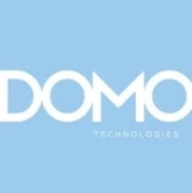

Domo and Splunk Security Essentials compete in data solutions, with Domo leading in business intelligence and pricing, while Splunk Security Essentials excels in cybersecurity features.
Features: Domo provides data visualization, analytics tools, and user-friendly business intelligence solutions. Splunk Security Essentials offers cybersecurity enhancements, security insights, and threat detection tools.
Ease of Deployment and Customer Service: Domo's cloud-based model is simple and comes with effective support, promoting quick adoption. Splunk Security Essentials requires a more complex setup, suitable for cybersecurity teams, and demands specialized support.
Pricing and ROI: Domo's pricing is more affordable with faster ROI due to lower setup costs. Splunk Security Essentials, though more expensive, offers long-term ROI with its advanced security capabilities.
| Product | Market Share (%) |
|---|---|
| Domo | 7.9% |
| Splunk Security Essentials | 0.4% |
| Other | 91.7% |


| Company Size | Count |
|---|---|
| Small Business | 16 |
| Midsize Enterprise | 11 |
| Large Enterprise | 20 |
Domo is a cloud-based, mobile-first BI platform that helps companies drive more value from their data by helping organizations better integrate, interpret and use data to drive timely decision making and action across the business. The Domo platform enhances existing data warehouse and BI tools and allows users to build custom apps, automate data pipelines, and make data science accessible for anyone through automated insights that can be shared with internal or external stakeholders.
Find more information on The Business Cloud Here.
Splunk Security Essentials provides a user-friendly interface that streamlines security operations with prebuilt content, helping organizations implement and manage security use cases efficiently.
This tool allows users to navigate a wide range of security use cases, offering valuable insights and tailored solutions. With its ability to enhance security postures, Splunk Security Essentials is essential for managing complex security operations. It supports use case development by providing actionable guidance and resources, enabling effective security measure planning.
What are the standout features of Splunk Security Essentials?In financial and healthcare sectors, Splunk Security Essentials is often utilized to bolster security frameworks, addressing unique industry challenges. Its adaptable structure supports compliance requirements, ensuring sensitive data protection and regulatory adherence in environments where security is paramount.
We monitor all Data Visualization reviews to prevent fraudulent reviews and keep review quality high. We do not post reviews by company employees or direct competitors. We validate each review for authenticity via cross-reference with LinkedIn, and personal follow-up with the reviewer when necessary.